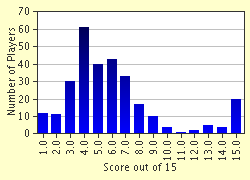Quiz Answer Key and Fun Facts
1. Some of the oldest amber carvings have been found in Mesopotamian graves.
2. Amber is obviously not a type of stone; before the development of plastics it was unique in many respects. Which of the following properties is not found in amber?
3. The nature of amber remained mysterious for many centuries. One Greek myth says the Heliades (daughters of Apollo) angered their father by weeping and were turned into amber trees. What were the Heliades grieving for?
4. The "amber road" was a precarious route by which amber was transported over the Alps to Italy and the Mediterranean. It was established by Iron Age traders before 400 BC. What was the source of this amber?
5. An important commercial source of amber developed in the 20th century is which?
6. "Look at this pendant; it has a whole butterfly trapped in it! That proves it's real!"
7. According to local legend, the ghost of Anselmus of Lozenstein wanders the shores of the Baltic Sea calling out "Free amber, oh God, free amber." Why was Anselmus condemned to this fate?
8. Rocket scientist Willy Ley was a writer of science fiction, but also wrote a book about amber. What is its title?
9. The Norse goddess Freya was condemned to wear a fabulous amber necklace forever, and as a result wept so bitterly that her tears generated more amber as they fell into the sea. Why was she so unhappy about wearing the beautiful necklace?
10. Other attempts to explain the origins of amber included which of these?
11. "African amber" beads worn in the 20th century for ornamental and mystical purposes were actually often made of what substance?
12. A substance frequently used as an amber substitute is called copal. It is formed from saps that have not gone completely through the process of becoming amber. Some types are reportedly thousands or millions of years old; others are still being harvested from copal trees. What are some ways to tell copal from true amber?
13. Other fossil resins found associated with Baltic amber include beckerite, gedanite, stantienite, and glessite.
14. A famous carved amber artifact was found in a Bronze Age burial mound in Hove, UK. It is now exhibited at Hove Museum and Art Gallery in Brighton. What is it?
15. Amber which has been heated and compressed into blocks ("ambroid") has been commercially produced since the 19th century. Which is not one of the advantages of using pressed amber?
Source: Author
ragiel
This quiz was reviewed by FunTrivia editor
ozzz2002 before going online.
Any errors found in FunTrivia content are routinely corrected through our feedback system.

